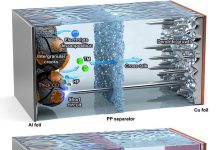
Stanford University scientists have found a practical and affordable way to remove carbon dioxide (CO2) from the air and store it permanently.
This could be a major step in the fight against climate change.
The new process uses heat to change common minerals into materials that naturally absorb CO2 from the air.
These materials can be made in regular kilns—the same kind used to produce cement—making the method simple and scalable.
“Earth has plenty of minerals that can trap CO2, but they work too slowly to keep up with human emissions,” said Stanford chemistry professor Matthew Kanan. “Our process makes these minerals react much faster, making large-scale carbon removal possible.”
In nature, certain rocks slowly react with CO2 to form stable minerals, a process called weathering.
However, this can take thousands of years. Since the 1990s, scientists have been looking for ways to speed it up—a technique known as enhanced weathering.
Kanan and postdoctoral researcher Yuxuan Chen developed a way to make slow-reacting minerals more active. Their method involves swapping ions in minerals through a simple chemical reaction. “We were surprised by how well it worked,” Chen said.
Carbon capture is an important tool in the fight against global warming, but current methods are expensive and use a lot of energy. A popular method, direct air capture, relies on large fans and chemical processes to filter CO2 from the air, but it is costly.
“Our method uses less than half the energy of direct air capture and is likely to be much cheaper,” Kanan said.
The idea for this new process came from an old method of making cement. Cement is made by heating limestone at high temperatures, creating a key ingredient called calcium oxide. The Stanford team used a similar process but added another mineral that contains magnesium and silicate ions. This resulted in two new materials—magnesium oxide and calcium silicate—that react quickly with CO2.
In lab tests, these materials fully absorbed CO2 within hours when exposed to water and pure CO2. When tested in regular air, they took weeks to months, still much faster than natural weathering.
This method could be used in different ways, such as spreading the reactive minerals over farmland. As they break down, they trap CO2 and improve soil health, benefiting farmers by reducing the need for additives.
Scaling up the process is possible using existing cement kilns and abundant minerals like olivine and serpentine, found worldwide and often left over from mining. Researchers estimate that using this method, each ton of material produced could remove one ton of CO2 from the atmosphere.
Kanan and his team are also exploring using electricity instead of fossil fuels to power the kilns, making the process even greener.
“The world already produces billions of tons of cement per year. If we use the same technology for carbon removal, we can scale up quickly and make a real impact,” Kanan said.



